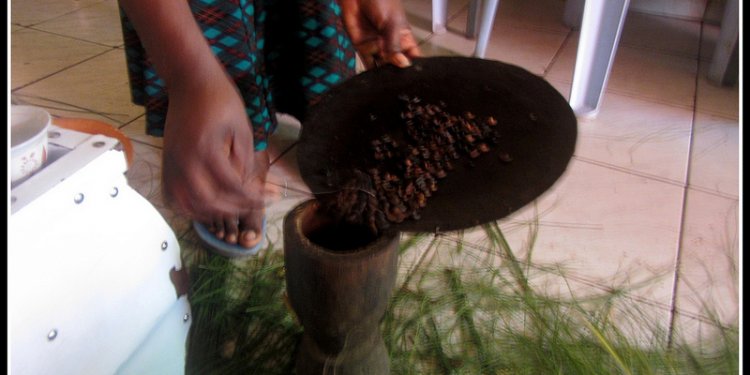
How to make coffee in Ethiopia?
Ethiopia may be the birthplace of coffee. In the tenth century, Ethiopian nomadic mountain folks might have been the first ever to recognize coffee's stimulating result, while they consumed the red cherries directly and would not drink it as a beverage. The mystic Sufi pilgrims of Islam distribute coffee throughout the Middle East. From Middle East these beans spread to European countries and throughout their colonial empire including Indonesia while the Americas.
Geography and Environment
Ethiopia is within sub-Saharan Africa, bordered on west by the Sudan, the east by Somalia and Djibouti, the south by Kenya, while the northeast by Eritrea. Ethiopia’s landscapes are covered in stunning earth colors. The united states has a few large hill ranges that keep tropical cloud woodlands. The Blue Nile, or Abbai, could be the main reservoir for normal water.
Ethiopia features a population of nearly 75 million people, lots of whom struggle to earn an income from their particular manufacturing and export of main products. Sixty-four % of the populace doesn't have usage of clean and safe water methods. 50 % associated with the population lives in economic impoverishment. The majority of the communities lack accessibility electricity. There are many grounds for this impoverishment, however, the mixture of local conflict and reliance on exporting main agricultural items are frequently reported as obstacles to much more inclusive renewable development.
Crisis, coffee-and politics
Ethiopia's record is full of dramatic changes. Over the past four years, the Ethiopian folks have resided under three variations of federal government, which include a semi-feudal imperial, an army guideline with Marxist ideological orientation from 1974-1991, and a federal governance system from 1991 before present. Most of these times being followed by dissatisfaction, equipped weight and rebellions.
Ethiopia has also confronted economic, social and environmental dilemmas including a war with Eritrea from 1998-2000. This recent dispute with Eritrea and various other historic conflicts has provoked many problems, including lost everyday lives, limited accessibility the land, psychological trauma, and severe appetite. The monetary cost of the war, in line with the Ethiopian government, ended up being about US$2.9 billion (although various other sources have place the financial price as high as US$5 billion).
The most recent coffee crisis took place within a framework of chronic economic poverty and amidst these persistent personal conflicts. In 2003, coffee rates plummeted with their cheapest amounts in Ethiopian coffee history. The costs no further covered farmers' costs of production, which produced multiple problems. Numerous manufacturers abandoned their particular farms in Kaffa and Oromia areas and migrated toward city. Various other farmers have actually turned to non-coffee crops. Farmers' earnings had been reduced and families had been often unable to buy basic material needs including clothing, meals and medicine, building products to fix their homes, cover the costs of essential personal and religious ceremonies, and kids's education. Despite these troubles many Ethiopia farmers remain focused on coffee cultivation.
Coffee
Arabica coffee, or jasminum arabicum laurifolia, features constantly grown crazy when you look at the woodlands of this south-western highlands of this Kaffa and Buno areas. The total area covered by Arabica and other types of coffee is mostly about 400, 000 hectares. Complete coffee manufacturing is about 200, 000 tonnes of clean coffee per year. This directly or ultimately impacts the livelihoods for more than 15 million people inside county. Ethiopia's economic climate is based on farming. Presently agricultural activities represent 45percent for the GDP, 85per cent of work, and 90percent of currency exchange earnings.
Coffee still develops wild in Ethiopia's mountain woodlands. Ethiopian farmers cultivate coffee in four various systems, which include woodland coffee, semi-forest coffee, yard coffee and plantation coffee. About 98per cent for the coffee in Ethiopia is created by peasants on small farms1 and it is the nation's key export. Ethiopia is Africa's 3rd biggest coffee producer. You can find about 700, 000 coffee smallholders in Ethiopia, of which 54 per cent have been in partial woodland areas. Coffee has-been section of their native cultural practices for longer than 10 generations.
Ethiopian coffee the most well-known coffee origins in the field. But Ethiopia must participate and mate with all the coffee businesses, which typically do have more marketplace power and earn greater profits. Yearly, the typical Ethiopian coffee farmer earns about $900 annually. The women which work in the coffee handling warehouses makes as low as $20 a month8. In certain cases the federal government has played a more energetic part. In 1952, the us government created a coffee category and grading system after which customized it in 1955. Ethiopian coffee certification began after the organization for the nationwide Coffee Board of Ethiopia (NCBE) in 1957. The NCBE's goals had been to regulate and coordinate producers, dealers, and exporters passions and improve the top-notch Ethiopian coffee. Recently, partnerships with small-scale Fair Trade roasters, like Equal Exchange, have aided the Ethiopian farmers discover a fairer price due to their coffee.
Ethiopian Cooperative and Fair-trade motions
Farmers' companies have actually been around in Ethiopia throughout various historical durations. Almost all of the very first level cooperatives were founded throughout the army government, which ruled from 1974 to 1991. The cooperative system provides their small-scale farmer people with solutions offering coffee processing, credit, real human and savings for rural development. As of 2004, Ethiopia had 4, 052 coffee cooperatives.
The S idama Coffee Farmers Cooperative Union (SCFCU) is an excellent exemplory case of what's feasible through farmer arranging and connection to Fair Trade coffee roasters. SCFCU was created in 2001 as a processing, advertising, and exporting union for 47 major cooperatives based in Ethiopia’s Sidama Zone, in Southern Ethiopia. The union represents some 85, 000 minor farmers. Equal Exchange at this time purchases from four of these cooperatives: Telamo, Abela Galuko, Fura, and Howolso, every one of which is located in Shebedino Woreda.

















